There are many varieties of dinuguan but most of the time pork blood, meat and internal organs are used in cooking. This dish, the chicken dinuguan uses chicken meat, blood and internal organs. Compared to pork, chicken is cheaper but the only tedious part in cooking is cleaning and preparation of the internal organs. This recipe requires live chicken so you can get the blood but if you can buy fresh chicken blood and internal organs for cooking, you can spare the task of slaughtering the live chicken yourself.
Chicken Dinuguan: A Family Recipe
Growing up, I was always surrounded by family, especially during big events like fiestas and family reunions. We had a long-standing tradition of cooking heartwarming dishes passed down from generation to generation. One of the most beloved was dinuguan, a savory stew made with meat and blood. While the version most of us are familiar with uses pork, my family had its own take: we used chicken instead. This version of the dish not only brings back memories but also offers a different experience in terms of flavor and preparation. My father always said it’s more practical to use chicken, and that’s something we continue to do to this day.
A Humble Dish with Deep Roots
Dinuguan is a dish deeply rooted in Filipino culinary history. It’s believed that this dish dates back to the pre-colonial period when our ancestors made the most out of every part of an animal, not letting anything go to waste. Over time, this stew of blood, vinegar, and meat became a comfort food for many. While pork is the usual star of the dish, regions across the Philippines have experimented with different proteins. In our family, my mother always preferred chicken. It wasn’t only more affordable; it was also easier to cook, especially for big gatherings where you needed to make large batches.
Chicken dinuguan has a lighter texture and flavor compared to its pork counterpart, but it still packs the same delicious punch that has made it a favorite at our family table.
The Secret to Perfect Dinuguang Manok
One thing I quickly learned from my mother and uncle is that the key to making a successful version of this dish is in the preparation of the chicken parts. While chicken is easier to work with, its internal organs—especially the intestines—need extra attention. It’s a lesson that stuck with me after watching my mother meticulously clean and prepare the innards. As she worked, she would often talk about how her own mother, my grandmother, taught her the same techniques in our province. Cleaning the intestines, she’d say, is an art in itself. You want to get rid of any impurities without compromising their texture.
After cleaning, the next important step is marinating the blood. My father always insisted on adding vinegar right away to keep the blood from coagulating. It’s a small detail, but it makes all the difference in the dish’s final texture. I still remember the way he used to tell me to stir the blood gently—just enough to mix in the vinegar, but not too much that it loses its consistency.
A Simmer of Tradition
When it comes to cooking the stew, patience is key. Once you’ve sautéed the garlic and onions, adding the cubed chicken meat and organs, the dish is left to simmer. The aroma that fills the kitchen as the chicken starts to brown and absorb the flavors is something that instantly brings me back to my childhood. My siblings and I used to gather around the kitchen, eagerly waiting for the first spoonful.
The real magic happens when the chicken blood is finally added. Watching the stew transform into its signature dark, thick sauce is always satisfying. My mother used to explain that it’s important to stir continuously at this stage to prevent the blood from clumping up. After a few minutes of stirring, the stew would thicken, and she’d always add just a touch of sugar to balance out the vinegar’s sharpness.
Making Dinuguang Manok Your Own
What I love most about this dish is how flexible it is. While my family’s version calls for liver, gizzards, and intestines, you can easily adjust the recipe based on what’s available to you. If you don’t have access to fresh chicken blood, for example, some markets sell it pre-packaged, making the process much easier for beginners. My sister, who lives in the city, often skips the intestines altogether and uses only the chicken meat and liver. It’s still delicious, and much simpler to prepare.
Another great tip I learned from my uncle is to add patis (fish sauce) towards the end of cooking. It elevates the dish, giving it a deeper umami flavor that complements the tangy vinegar. Some families might prefer to add green chili for a spicy kick, but my mother always left that to personal taste. If you’re making this dish for the first time, start simple and adjust the ingredients to your liking.
A Taste of Home
Cooking this dish always feels like coming home. The process might seem intimidating at first, especially if you’re unfamiliar with preparing chicken organs, but once you’ve tried it, it becomes second nature. The simplicity of the ingredients—chicken, blood, vinegar, and a few basic seasonings—comes together to create something truly special.
Even though the preparation can be a bit tedious, especially when cleaning the internal organs, the end result is always worth it. There’s something about that first bite—the tender chicken, the richness of the blood, and the perfect balance of sour and savory—that makes you feel like you’re part of something bigger. It’s a connection to the past, to our culture, and to the people who came before us.
In our family, this dish isn’t just food—it’s tradition. Whether it’s being served at a fiesta, a family reunion, or just a regular Sunday lunch, it always brings us together. And now, I hope it brings a little bit of that same warmth to your home too.
How to Cook Chicken Dinuguan (Dinuguang Manok)
Ingredients
- 1 live chicken
- 1/2 kilo chicken liver gizzard and intestines
- chicken blood from the live chicken
- 1/2 cup vinegar
- 1/2 tsp. ground pepper
- oil for sauteing
- 2 cloves garlic crushed
- 1 pc red onion chopped
- 1 tsp sugar
- 1 tsp. fish sauce or patis
- 1 cup water
- 1/2 tsp. magic sarap
- 2 Tbsp. cooking oil
Instructions
How to cook Chicken Dinuguan:
- Prepare a bowl with 1/2 cup vinegar. This is where you will put the blood from the chicken. Mix the blood and the vinegar for a few seconds and set aside.
- Get the internal organs from the chicken, gizzards, liver and small intestines and cut into cubes. Remove the bones from the chicken and cut the chicken meat (with the skin) into cubes. You can also but additional gizzards, liver and intestines.
- Make sure to clean the internal organs thoroughly specially the intestines.
- In a small wok, heat the oil and saute the garlic and onion for at least 1 minute then put the cubed chicken meat and internal organs and saute for another 2 minutes.
- Let it simmer in medium fire until the liquid is almost dry. Then pour 1 cup of water and simmer again until the meat and internal organs are cooked. Put the pepper and magic sarap when the liquid is already boiling.
- When the meat and internal organs are almost cooked, pour the chicken blood and put a little sugar to balance the taste of the vinegar in the blood.
- Mix until the blood starts to thicken. Add patis to improve the taste then serve hot.
Notes
Cooking Tips:
Properly Clean the Chicken Organs
When preparing chicken organs like the liver, gizzards, and intestines, make sure to thoroughly clean them to remove any impurities. Rinse the intestines several times under running water and boil them briefly to ensure cleanliness. This step prevents unwanted flavors and enhances the overall taste of the dish.Stir the Blood with Vinegar Immediately
To prevent the chicken blood from coagulating, quickly mix it with vinegar as soon as you collect it. This step keeps the blood smooth and easy to incorporate into the stew later. Stir gently for just a few seconds, ensuring the mixture stays fluid and well-balanced.Simmer Slowly for Deeper Flavor
Allow the dish to simmer on medium heat, letting the chicken and internal organs fully absorb the flavors of the garlic, onion, and seasonings. Slow cooking enhances the texture and ensures that the vinegar and blood meld seamlessly into a thick, rich sauce. Stir occasionally to prevent sticking and help the stew thicken evenly.
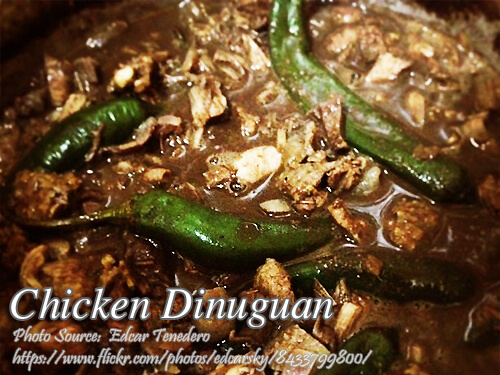

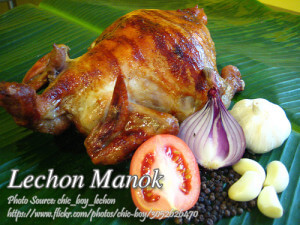
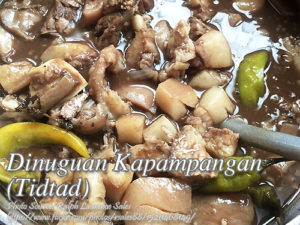
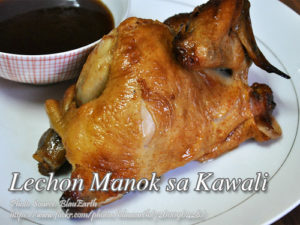
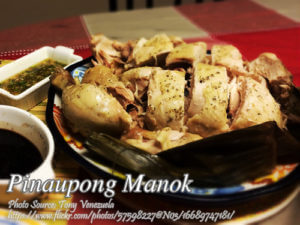
This sounds delicious!
can i use pork blood instead? thank u
HI Ria, I think you can use pork blood since they taste almost the same. Its just the consistency is a bit different.
Thanks for this Sir Manny.
Hi John Henry, you are welcome!
Hi Thomas, thanks for your visit and kind words. Cheers!
Panlasang pinoy thanks you more power